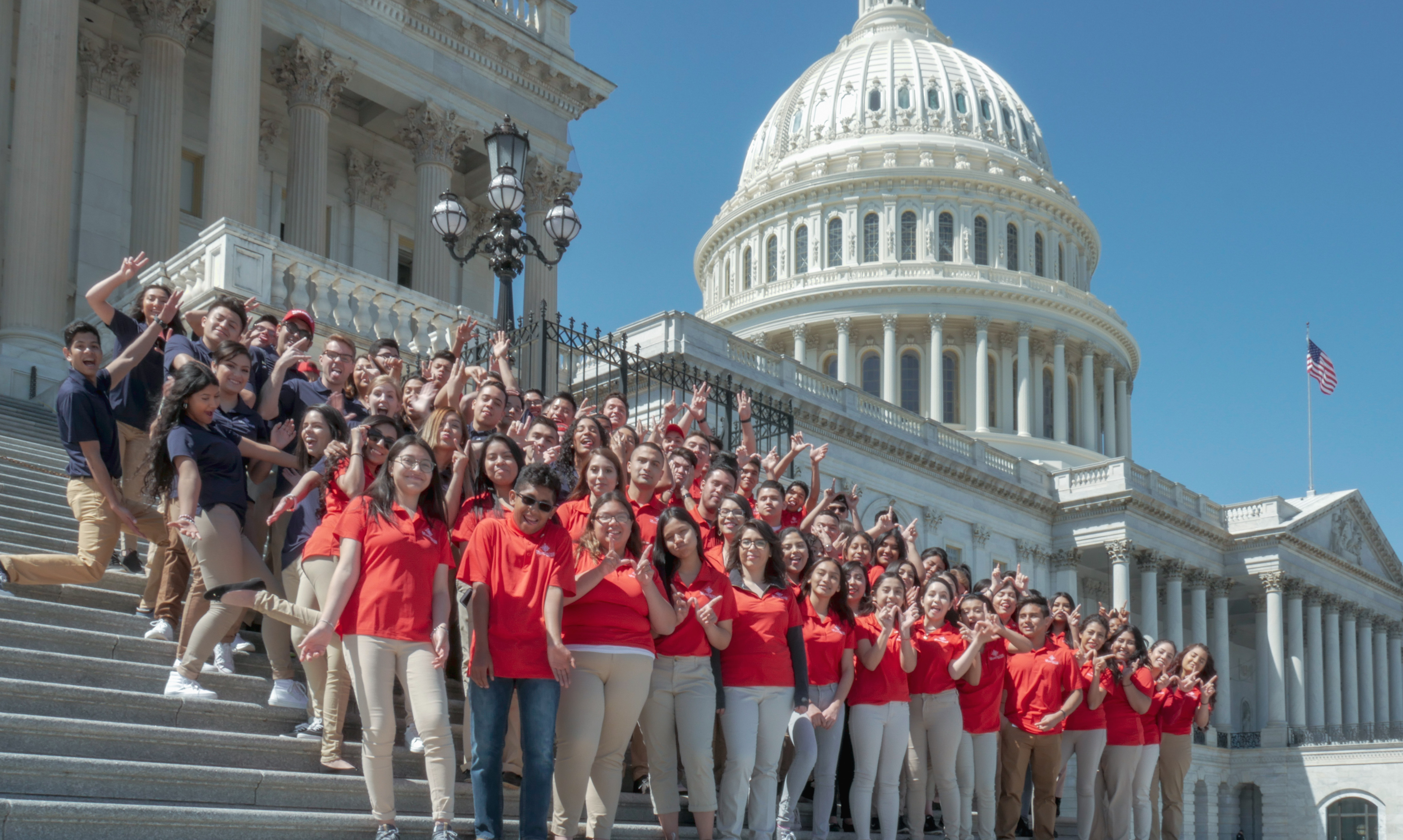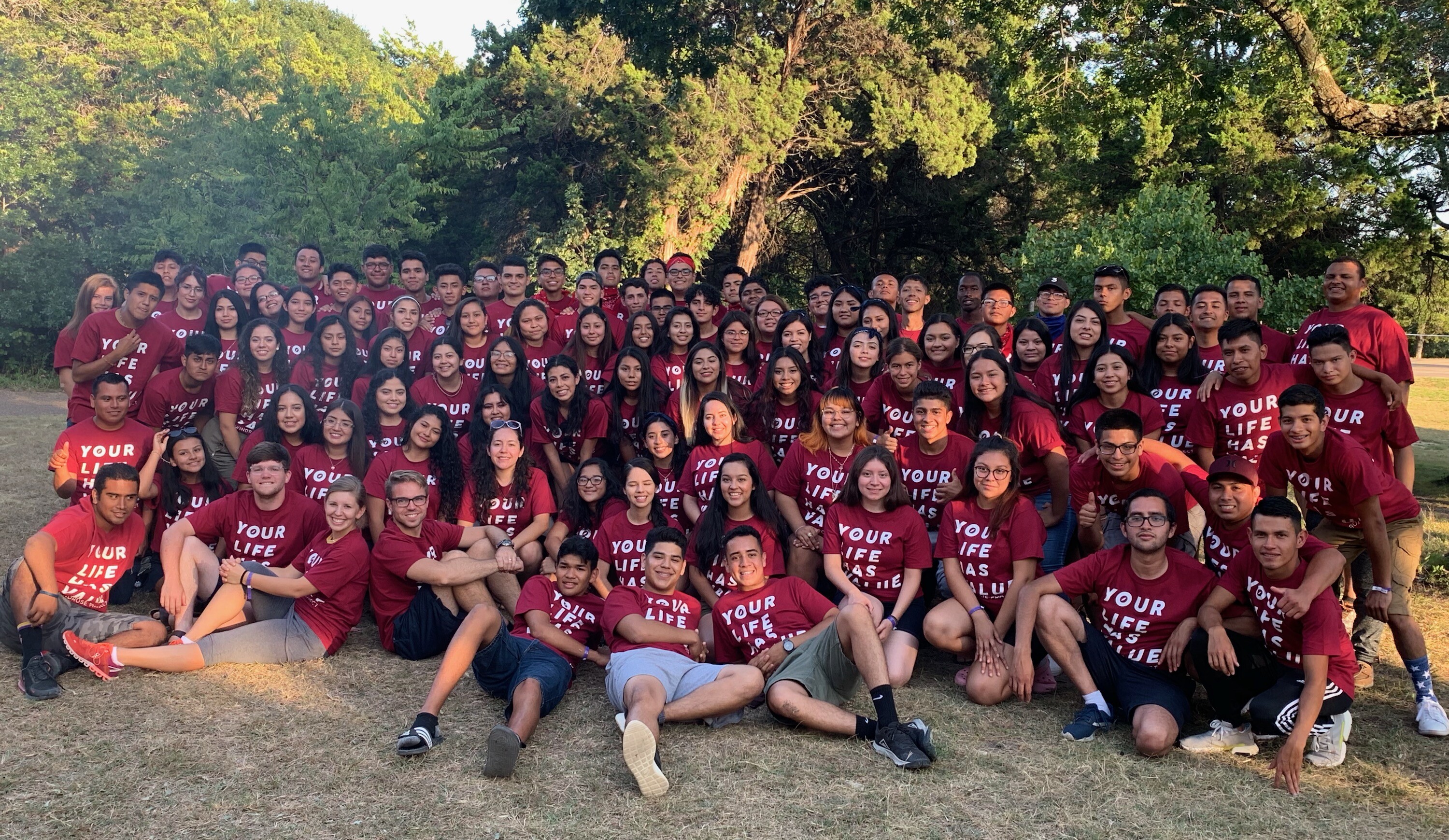
March 2019
By Spencer Amaral
Ever since I was a little boy, I have been totally fascinated by the story of the Battle of the Alamo. I am so excited to explore this amazing chapter of our history with you, and I am sure you will come to understand why this event captured my imagination at an early age. This month, we’ve challenged all of our chapters to watch The Alamo (1960 film) with John Wayne. So let’s dig into the history behind the battle to help put the movie into better context.
The Battle of the Alamo took place on March 6, 1836, almost exactly 183 years ago. At that time, the world was quite different than it is today. Cars were not invented, so people primarily traveled on horses. Slavery was still legal in the southern half of the country (roughly 25 years before the Civil War began), and the American republic was still very new. The “new world” in the western hemisphere was still dominated by small frontier towns amid the vast expanse of unsettled wilderness. Mexico had recently fought a long and bitter revolution to free itself from the rule of Spain. In the aftermath of the revolution, however, things continued to be chaotic, as the new leaders of Mexico turned against one another and suffered from betrayals and plots. A central figure in all the drama was a successful and popular general in the Mexican army, Antonio Lopez de Santa Anna.
During the war for independence, Santa Anna originally fought on the side of Spain. After many years of fighting, however, he decided that he could better serve his own interests by switching his allegiance to the revolutionary cause. After the war was won, Santa Anna betrayed the federalist principles of the Mexican Revolution and eventually made himself de facto dictator of Mexico. He immediately began to violate the new Mexican Constitution of 1824 by centralizing power to himself, but his power grabs were resisted by many Mexican states, particularly Tejas (modern day Texas). Santa Anna was able to use his massive army to put down the other revolts across Mexico, but Tejas was the one state that was able to fight him and win its independence from Mexico. The Battle of the Alamo is the most famous battle of that fight.
There are a few important themes to focus on in the story of the Alamo. First, Texas’s fight against Santa Anna was NOT a war between Americans and Mexicans, it was a struggle between liberty and tyranny; a dictator versus those who sought to be free. After all, Tejas at the time was filled with pioneers, settlers, and immigrants from around the world. There were native Tejanos who were born and raised in the frontier as citizens of first Spain and then Mexico. There were many Americans who had immigrated to Tejas to find land, opportunity, and freedom. There were Native Americans who had been converted to Catholicism by Spanish missionaries and integrated into Mexican society. There were African Americans who came as slaves, or as free men also looking for land and opportunity. There were European immigrants who had left the “old world” in search of liberty, land, and a new start.
Don’t just take my word for it, however, the Alamo defenders speak for themselves. In his final letter calling for Texans to come reinforce the Alamo, the courageous words of Col. William B. Travis, commander of forces at the Alamo, demonstrate his resolve and his love of liberty:
Commandancy of the The Alamo
Bejar, Feby. 24th. 1836
To the People of Texas & All Americans in the World-
Fellow Citizens & compatriots-
I am besieged, by a thousand or more of the Mexicans under Santa Anna – I have sustained a continual Bombardment & cannonade for 24 hours & have not lost a man – The enemy has demanded a surrender at discretion, otherwise, the garrison are to be put to the sword, if the fort is taken – I have answered the demand with a cannon shot, & our flag still waves proudly from the walls – I shall never surrender or retreat. Then, I call on you in the name of Liberty, of patriotism & everything dear to the American character, to come to our aid, with all dispatch – The enemy is receiving reinforcements daily & will no doubt increase to three or four thousand in four or five days. If this call is neglected, I am determined to sustain myself as long as possible & die like a soldier who never forgets what is due to his own honor & that of his country – Victory or Death.
William Barret Travis.
Lt. Col.comdt.
P. S. The Lord is on our side – When the enemy appeared in sight we had not three bushels of corn – We have since found in deserted houses 80 or 90 bushels and got into the walls 20 or 30 head of Beeves.
Travis
In short, Texas was primarily a society of immigrants from many different places and backgrounds, who together were hoping to find a place to call their own, where they could live, work, and enjoy the blessings of liberty in peace. So as you watch the Alamo film, it’s important to remember that whereas revisionist historians today want to portray the Texas Revolution as “white people who don’t belong here vs. indigenous people of color,” in reality, it was a battle between liberty and dictatorship. In any war, the most important things at stake are the principles being fought for, not the skin color of the people fighting. Unfortunately, this truth is often lost in how we study history today, due to the imposition of personal bias and collectivist politics based on group identities. Those Texans who laid their lives on the line for freedom were heroes, and their story deserves to be told.
What does the Battle of the Alamo have to do with personal leadership, you may ask? The story of the Alamo gives us cause to stop and ask ourselves what greater cause or principle we would be willing to die for. It is an important question, and one that we should be willing to answer. If there is nothing outside of ourselves that we would be willing to die for, it is a statement of pure self-obsession and apathy for truth, justice, and the value of life in other people. And if we do think there are some things worth dying for, we best think very hard about it first and know exactly where to draw the line before taking such a dire stance. It’s easy to talk about these things as we sit at home in total peace and safety. It’s a much different question when the massive weight of duty and honor falls upon your own shoulders, and you see the notion of death approaching quickly. As C. S. Lewis wrote, “All morality is prepared morality.” Thus, these questions are worth asking now, when we have the luxury to speak about them as hypotheticals.
The good news is that we can, and should take action regarding those beliefs that lie closest to our hearts.





